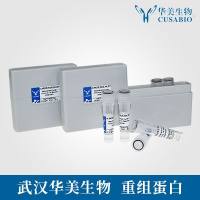Producing Bispecific and Bifunctional Antibodies
互联网
互联网
相关产品推荐

Recombinant-Rat-NADPH-oxidase-4-Nox4Nox4; Kox; NADPH oxidase 4; EC 1.6.3.-; Kidney oxidase-1; KOX-1; Kidney superoxide-producing NADPH oxidase
¥10696

KCNQ1/KCNQ1蛋白Recombinant Human Potassium voltage-gated channel subfamily KQT member 1 (KCNQ1)重组蛋白IKs producing slow voltage-gated potassium channel subunit alpha KvLQT1;KQT-like 1;Voltage-gated potassium channel subunit Kv7.1蛋白
¥9720

KCNQ1/KCNQ1蛋白Recombinant Cynomolgus monkey Potassium voltage-gated channel subfamily KQT member 1 (KCNQ1)重组蛋白IKs producing slow voltage-gated potassium channel subunit alpha KvLQT1 ;KQT-like 1;Voltage-gated potassium channel subunit Kv7.1蛋白
¥9720

KCNQ1/KCNQ1蛋白Recombinant Cavia porcellus Potassium voltage-gated channel subfamily KQT member 1 (KCNQ1)重组蛋白IKs producing slow voltage-gated potassium channel subunit alpha KvLQT1;KQT-like 1;Voltage-gated potassium channel subunit Kv7.1蛋白
¥9720

KCNQ1/KCNQ1蛋白Recombinant Pig Potassium voltage-gated channel subfamily KQT member 1 (KCNQ1)重组蛋白IKs producing slow voltage-gated potassium channel subunit alpha KvLQT1;KQT-like 1;Voltage-gated potassium channel subunit Kv7.1蛋白
¥9720

